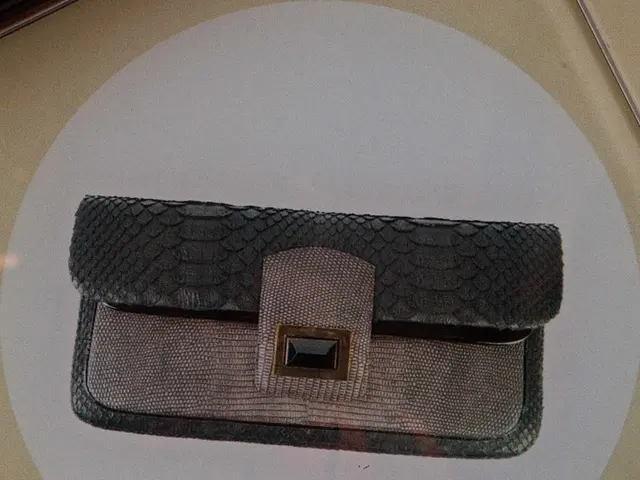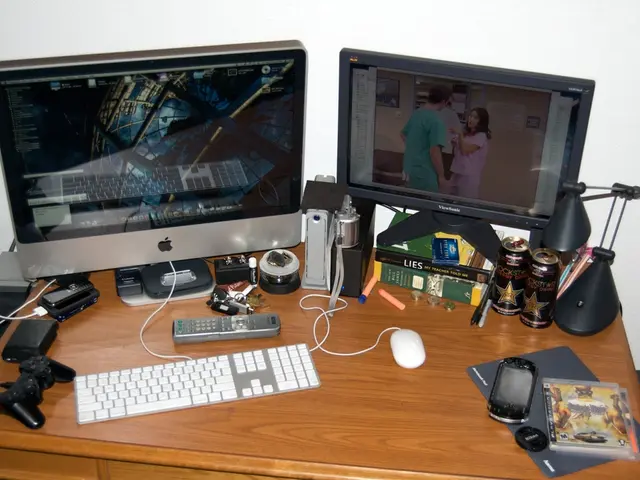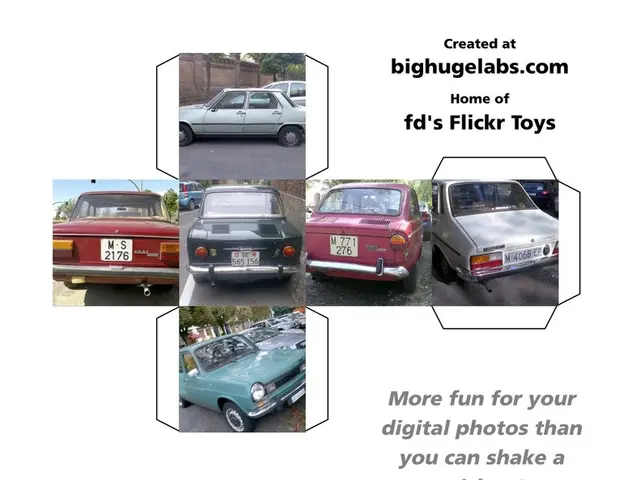Exploring the HMD Fusion: Does Fashion Transform this Smartphone's Appeal?
The HMD Fusion Ventures into Unique Functionality through Smart Cases, Offering DIY Plans for Customization. Is this Sufficient to Strike a Chord in a Congested Market?
I've invested time this month to shed light on this matter.
The HMD Fusion as a Mobile Device
Priced at £229 in the UK, the HMD Fusion is a noteworthy smartphone that delivers as anticipated at this price point. It boasts Qualcomm's Snapdragon 4 Gen 2 chipset, backed up by 6 GB of memory, and a capacity of 128 GB of internal storage, with the addition of SD Card support, enabling an expansive 1TB if needed.

Standard day-to-day activities, such as social media browsing, web surfing, and PDA duties, can be carried out on the Fusion with ease. However, more advanced capabilities might not run smoothly.
The screen resolution is 720p, and the display technology isn't particularly stellar; colors fade under medium light, and sunlight can negatively impact the clarity of the screen.
In terms of software, the Fusion is set to receive two Android version updates and three years of security updates. Unfortunately, with its launch on Android 14, these updates will extend only up to Android 16, around early 2026.

If the Fusion's offerings were limited to the phone alone, it would struggle to stand out in the sea of smartphones at this price range. However, there's one design decision HMD hopes will set the Fusion apart. Besides purchasing extra phone cases that augment the device's functionality, you can also download the plans to create your own or those of others.
The HMD Fusion and Its Smart Cases
HMD has dubbed these accessories as Smart Fusion Outfits.

Located on the back of the Fusion are six electrical contacts providing power, data, and control lines. By virtue of pogo pins within a case, these contacts allow for interaction. HMD demonstrated several potential case designs, such as a ring light integrated case (the Flashy Outfit), a highly protective case rated IP68 (the Rugged Outfit), and a gamepad-style case with analog sticks (the Gaming Outfit).
In addition to the review unit of the Fusion, HMD provided a Flashy Outfit. This ring light illuminates subject matter in photos and videos. Power flows through the pins and into an LED ring that encircles the primary camera, much like many webcams equipped with ring lights. Furthermore, it folds over the top of the phone to aid in selfie lighting with the front-facing camera.
There's not much to go wrong with this device; it does its job as a camera fill light quite well, demonstrating the potential of an Outfit.

However, I would mention that this outfit is somewhat snugly fit around the Fusion, as is the default 'non-functional' case included in the retail packaging of the Fusion. Changing between the two feels like a laborious task, making me wary of frequent switches.
The HMD Fusion's Historical Challenges
The concept of modular attachments is not a new phenomenon in the smartphone industry. Recent Moto Mods on Moto Z handsets relied on magnetic attachment points on the rear of the phone, powered by a series of pogo pin points for the necessary power and data connections.

I recall the hype surrounding the 2012 launch of the Nokia Lumia 820 with its interchangeable shells and the subsequent publishing of associated CAD files for 3D printing new shells.
Unfortunately, neither of these gained substantial commercial success. They lacked both the volume of handsets necessary for peripheral manufacturers to invest, along with the manufacturer's implied backing in terms of ongoing software support and platform accessibility.
HMD provides the necessary production files and specifications on the website, ideally allowing users to create their own attachments. However, without a substantial user base, this remains a niche pursuit primarily for hobbyists and creatives.

Can Custom Cases Suffice?
The HMD Fusion straddles a precarious line. On one hand, it aims at the tinkerers, makers, and creators, offering them the ability to develop their own custom cases that seamlessly integrate with their smartphones. On the other hand, the Fusion's all-plastic construction, limited 720p display, two years of updates, and a locked bootloader don't appeal to this same demographic.
I appreciate the concept of the outfits, but successful manufacturing relies on a sizable user base. I can hardly imagine the Fusion capturing the attention of categorical smartphone giants like the Galaxies, Pixels, or iPhones.
This leaves me questioning the Fusion's intended audience. Perhaps there's potential in the enterprise market—bulk B2B sales for customized devices, complete with barcode scanners or specific scanning technology, could prove fruitful. The HMD Fusion might not be the modular phone consumers crave, but its modular component could flourish in niche use cases.
I applaud HMD for taking a chance on the Fusion. I'm confident that a specific market was identified during development, and the Fusion successfully caters to it. I suspect, however, that the consumer market serves as more of a bonus rather than the main focus for the Fusion's design strategies.
Disclaimer Alert: HMD handed over an HMD Synergy and Glitzy Ensemble for evaluation purposes.
The modular nature of the HMD Fusion allows users to explore customization options beyond standard phone cases. This can be achieved by using the provided Smart Fusion Outfit plans for 3D printing or by purchasing pre-made outfits like the Ring Light Outfit.
One of the Smart Fusion Outfit options is the Ring Light Outfit, which enhances the Fusion's photography capabilities by illuminating subjects with an external LED ring. However, changing between this outfit and the default case can be somewhat challenging due to their tight fit.
The HMD Fusion's modular design is reminiscent of other attempts in the smartphone industry, such as the Moto Mods and the Nokia Lumia 820's interchangeable shells, but these past attempts failed to gain substantial commercial success.
Despite the challenges faced by previous modular phone designs, HMD provides production files and specifications, encouraging users to create their own custom attachments. This approach may find success in niche use cases, particularly in the enterprise market, where bulk B2B sales of customized devices could be lucrative.






